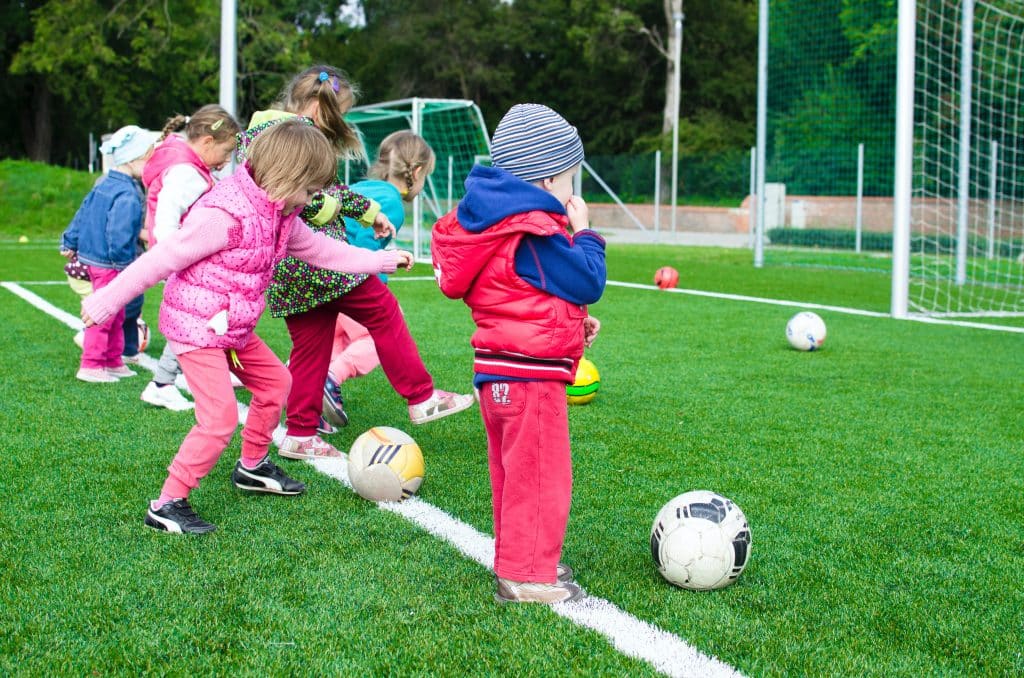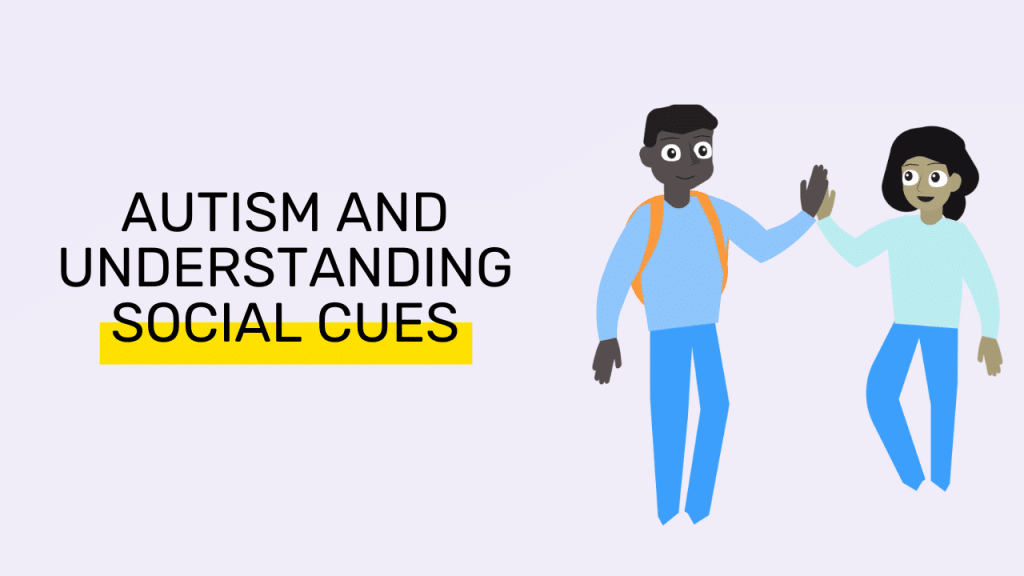Communication can be a challenge, especially when up to 55% of that communication is based on social cues. For people with Autism Spectrum Disorder (ASD), there’s another layer of complexity: one of the main challenges faced by individuals with autism is understanding and responding to social cues. These cues include both verbal and nonverbal signals that people use to communicate their feelings, thoughts, and intentions.
Table of Contents
Social cues play a significant role in helping us navigate our daily interactions and build relationships. For children with autism, difficulties in understanding these cues may lead to social isolation, misunderstandings, and increased anxiety. By helping your child recognize and respond to social cues, you can foster their social skills, boost their confidence, and improve their overall quality of life.
How Autism Affects the Ability to Understand Social Cues
ASD is a complex, lifelong condition characterized by differences in communication, social interaction, and restricted or repetitive behaviors. The severity of these symptoms and the level of support needed can vary widely from person to person.
A common challenge for individuals with autism is navigating the intricate world of social communication. This includes interpreting nonverbal cues, processing verbal cues, and understanding the nuances of social situations.
Nonverbal cues
- Facial expressions: Children with autism may struggle to recognize and interpret facial expressions, which convey essential information about a person’s emotions and intentions.
- Body language: Posture, gestures, and eye contact can be difficult for children with autism to process and understand, leading to potential miscommunication.
- Tone of voice: Picking up on the emotional tone or emphasis in someone’s voice may be challenging for individuals with autism, making it hard for them to gauge the speaker’s true feelings or intentions.
Verbal Cues
- Idiomatic expressions: Phrases like “break a leg” or “it’s raining cats and dogs” can be confusing for children with autism, who may interpret them literally.
- Sarcasm and humor: Understanding sarcasm, irony, and subtle humor can be particularly challenging for individuals with autism, as they may not recognize the playful intent behind the words.
- Conversational context: Children with autism might struggle with following the flow of a conversation, staying on topic, or interpreting the unspoken social rules that govern our interactions.
- Impact on social interactions and relationships
Goally | Visual Scheduler for Autism
Does your child struggle with getting ready in the morning independently? Goally’s routine app on the best tablet for kids breaks down large tasks into small, achievable steps for autistic kids. Create custom routines with your own videos & pictures for every step.
Difficulty understanding social cues can lead to misunderstandings, feelings of isolation, and challenges in forming and maintaining relationships. By helping your child learn to navigate these social nuances, you’ll be supporting their ability to connect with others and enjoy a more fulfilling social life.
Different Levels Autism and Social Cues
Remember that autism is called a “spectrum” disorder for a reason. This means that each person with autism is unique, and their symptoms and abilities can vary widely. While some individuals may have significant challenges understanding social cues, others might experience only mild difficulties.
Given this variability, it’s essential to assess each child’s abilities and challenges individually. This will help you tailor your support to their specific needs, making sure that they get the best possible help in developing their social skills.
Mild, Moderate, and Severe Autism
Autism can be categorized as mild, moderate, or severe, depending on the intensity of symptoms and the level of support required. Those with mild autism may have subtle difficulties with social cues, while those with moderate or severe autism may face more significant challenges.
As you might expect, a child’s ability to understand social cues often correlates with the severity of their autism. However, it’s crucial not to make assumptions based solely on these categories. Each child is unique, and their abilities may not always align with what’s typical for their level of severity.
Given the diverse nature of autism, it’s important to find personalized strategies and interventions that work best for your child. This may involve working with professionals to identify your child’s specific needs and create an individualized plan to help them develop their social skills.
ASD and Learning to Recognize Social Cues
Social Skills Training
- Role-playing activities can be a fun and engaging way to help children with autism practice recognizing and responding to social cues. By acting out different scenarios, they can learn to navigate various social situations more effectively.
- Video modeling involves watching videos of people successfully navigating social situations and then imitating their behavior. This can be a helpful tool for children with autism, as it allows them to see examples of appropriate social interactions and practice them in a controlled environment.
- Social stories are short, personalized stories that help children with autism understand and respond to social cues. By breaking down complex social situations into simple, easy-to-understand steps, social stories can help children learn the “rules” of social interactions.
Speech and Language Therapy
Speech and language therapists can work with children with autism to improve their verbal communication skills. This can include teaching them how to use and understand idiomatic expressions, sarcasm, humor, and conversational context.

Read More: ADHD and Social Cues
Speech and language therapists can also help children with autism learn to interpret nonverbal cues, such as tone of voice, facial expressions, and body language. This can be a crucial part of their overall social communication development.
Cognitive-Behavioral Therapy
Cognitive-behavioral therapy (CBT) can help children with autism develop perspective-taking skills, or the ability to understand and empathize with other people’s thoughts and feelings. This is an essential skill for interpreting and responding to social cues.
CBT can also help children with autism learn to manage their emotions more effectively. By understanding and regulating their emotions, they can better navigate social situations and respond appropriately to the social cues they encounter.
By exploring these various strategies and therapies, you may help your child with autism learn to recognize social cues and develop the skills they need for successful social interactions. Remember, it’s all about finding what works best for your unique child and supporting them on their journey toward social growth.
Tips For Parents to Help Their Kids Learn Social Cues
Early Intervention
Early diagnosis is crucial when it comes to helping your child develop their social skills. The earlier you can identify your child’s challenges and strengths, the sooner you can start implementing appropriate interventions and support.
Once you have a diagnosis, it’s essential to access appropriate services such as speech and language therapy, occupational therapy, and social skills training. These professionals can help your child learn to understand social cues and navigate social situations more effectively.

Promoting Social Interactions
Encourage your child to participate in playdates and group activities. This will provide them with opportunities to practice their social skills and learn from their peers in a safe and supportive environment.
Enroll your child in inclusive settings such as mainstream schools or community clubs that welcome children with diverse abilities. This will expose your child to a range of social interactions and foster acceptance and understanding.
Modeling and Reinforcement
As a parent, you can aid your child in learning social cues by modeling appropriate behavior. For example, make a conscious effort to use clear facial expressions, gestures, and tone of voice to convey your emotions and intentions.
Offer your child constructive feedback on their social interactions and celebrate their successes. Positive reinforcement can help build their confidence and motivate them to keep practicing their social skills.
Collaborating with Professionals
Work closely with your child’s teachers and therapists to create a consistent and supportive environment. Share your insights and concerns, and stay informed about your child’s progress.

Read more: Free Printable Cue Cards for Behavior
Together with professionals, develop an individualized support plan that addresses your child’s unique needs and goals. Regularly review and update this plan to ensure it remains effective and relevant.
Tips for Kids to Help Them Recognize Social Cues
Self-Awareness and Self-Advocacy
Encourage your child to recognize their strengths and challenges when it comes to social interactions. This self-awareness can help them seek support when needed and develop a growth mindset. Teach your child the importance of asking for help when they’re unsure or struggling. This can be as simple as asking a friend or teacher for clarification or seeking guidance from a trusted adult.
Practicing Social Skills
Encourage your child to observe and learn from their peers and role models. This can help them understand social cues and norms, as well as develop their own social skills. Participate in role-playing activities with your child to help them practice social interactions in a safe and supportive environment.
Using Technology and Resources
Explore apps and software specifically designed to help individuals with autism develop social skills and understand social cues. Provide your child with books and online resources that teach social skills and offer practical advice on navigating social situations.
Building a Support Network
Help your child connect with peers and mentors who share similar experiences or interests. These connections can offer valuable insights, support, and encouragement. Encourage your child to join support groups or clubs specifically designed for individuals with autism. These can be invaluable sources of information, camaraderie, and understanding.
SPONSORED BY: Goally
Goally’s Kid’s Tablet has one of the largest libraries of skill-building videos (like “How to Share” and “What To Do When You’re Lost”) in the Goal Mine app.👇
As we wrap up this blog post, we want you to remember that you are not on this journey alone. There’s a whole community of parents, educators, and professionals who share your experiences and are here to support you. Remember that every child is unique, and with the right guidance and support, they can learn to navigate the world of social cues and interactions. It’s essential to recognize that learning social cues is an ongoing process, both for your child and for you as a parent. Be open-minded and willing to learn, adapt, and grow as your child develops. Stay curious, ask questions, and continue to seek out resources and support.
This post was originally published on 03/28/2023. It was updated on 11/22/2023.

Goally
We help parents teach their kids life skills, like doing bedtime and morning independently. Backed by science, we incorporate evidence-based practices and expert-informed designs in all of our apps and content.








